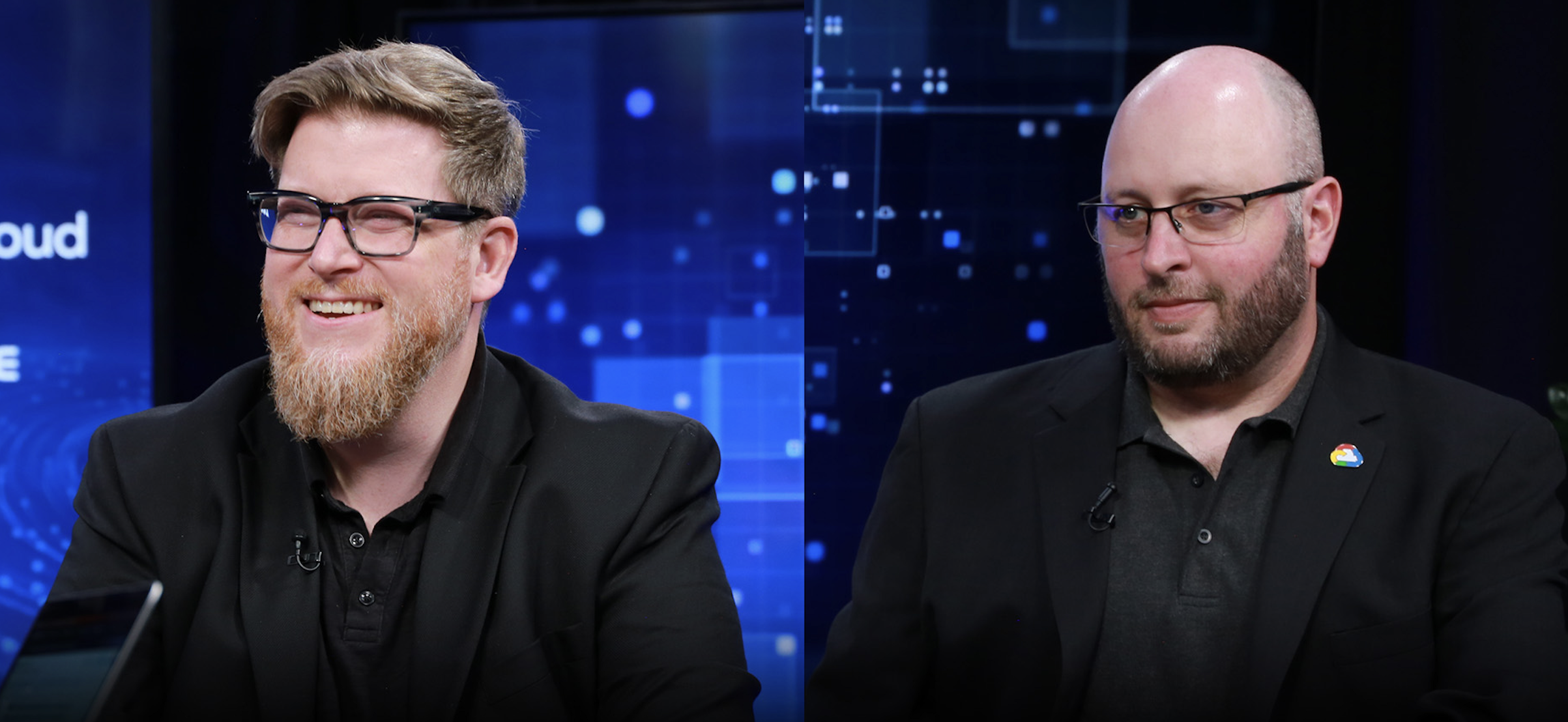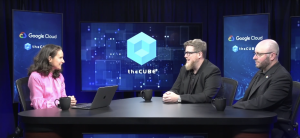 AI
AI
 AI
AI
 AI
AI
Artificial intelligence is leaving behind the era of flashy demos. In their place, organizations are demanding AI outcomes that deliver a measurable return on investment.
As the industry reckons with the question on whether AI deployment is truly delivering bang for its costly buck, enterprises are reconsidering their outlooks. But whether or not this change in perspective will be productive depends on enterprises moving beyond seeing AI initiatives as expensive “parlor tricks” and measuring them as results-driven investments, according to Miles Ward (pictured, left), chief technology officer of Sada Systems Inc.

Sada’s Miles Ward and Google Cloud’s Eliot Danner talk with theCUBE about driving AI outcomes.
“Any technology sufficiently advanced is indistinguishable from magic,” he said. “It’s dangerous; It does things you don’t expect. I think a lot of the experiments were not only couched in those terms, designed as sort of science projects [with] no real threshold for success … but they were also critically placed way outside of the blast radius of where the business actually makes money; where the critical data sits.”
Ward and Eliot Danner (right), global managing director for Google Distributed Cloud at Google Cloud, spoke with theCUBE’s Rebecca Knight for the Google Cloud Partner AI Series event, during an exclusive broadcast on theCUBE, SiliconANGLE Media’s livestreaming studio. They discussed the enterprise shift from AI experiments to AI outcomes, underscored by data-driven measurement. (* Disclosure below.)
Enterprises that scale responsibly start by mapping AI outcomes from that very “blast radius” where core data and revenue live. They align product teams and business owners to replace vague pilots with clear success criteria, according to Danner. That clarity moves work away from costly tinkering and toward production pathways that teams can audit for success.
“I think we went through the era of experimentation and now we’re seeing the era of outcome expectation, right?” Danner said. “The mode that we’re in right now, I think, is the middle phase of customers going ‘We’ve experimented with it; we’ve got some ideas about what we could do.’ We didn’t actually see the results we expected in terms of actual revenue from the experimentation. Now we need to get into a more outcomes-driven approach.”
With priorities set, the technical foundation is essential: grounding, reliability and compliance guardrails that keep systems tied to verified data. Without that discipline, hallucinations — confident but false answers — can slip into workflows that drive bad decisions. Teams should require traceable answers and build for resilience so systems stay online when the stakes are high, according to Danner.
“Grounding and making sure that our AI is linkable back to provable facts has been a key core component of AI development at Google,” he said. “It’s an area that we’re an absolute leader in, and we’ve spent a tremendous amount of time making sure that you can walk back the AI to a specific grounded element, that [the] grounded element is something that’s been incorporated and really reduces hallucinations as aggressively as possible.”
Modernization choices then shift understanding AI outcomes to “what should we do” instead of “what could we do.” Connectors and an orchestration layer — such as Google’s Agentspace — sit atop legacy systems so organizations can ship value quickly while prepping for larger transformations. That focus also changes how teams judge progress by electing for evaluation over pass/fail testing, Ward explained.
“You can’t test this kind of software,” he said. “Test implies that it is deterministic; that it can do exactly what you expect. That stuff’s not deterministic. You have to instead evaluate it. We work together with customers to build the evaluation framework … There’s some real lessons to be learned about how businesses that have very, very tight timelines on performance are maybe approaching these things [differently] than folks that have really huge data sets to digest. That combination of context and experience shortens the path to value for all of our customers”
Here’s the complete video interview, part of SiliconANGLE’s and theCUBE’s coverage of the Google Cloud Partner AI Series event:
(* Disclosure: Google LLC sponsored this segment of theCUBE. Neither Google nor other sponsors have editorial control over content on theCUBE or SiliconANGLE.)
Support our mission to keep content open and free by engaging with theCUBE community. Join theCUBE’s Alumni Trust Network, where technology leaders connect, share intelligence and create opportunities.
Founded by tech visionaries John Furrier and Dave Vellante, SiliconANGLE Media has built a dynamic ecosystem of industry-leading digital media brands that reach 15+ million elite tech professionals. Our new proprietary theCUBE AI Video Cloud is breaking ground in audience interaction, leveraging theCUBEai.com neural network to help technology companies make data-driven decisions and stay at the forefront of industry conversations.